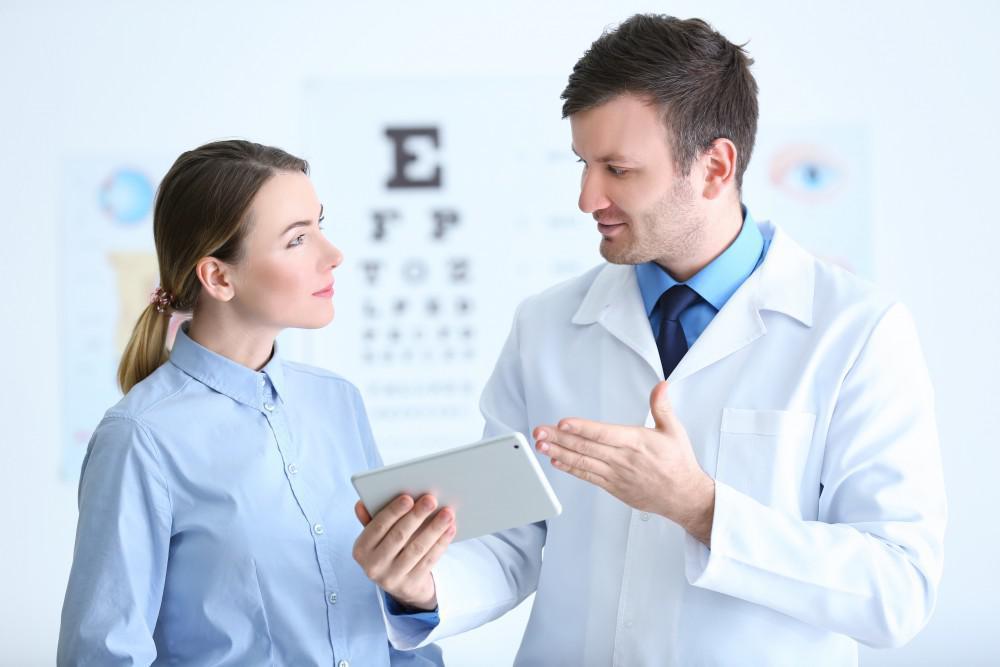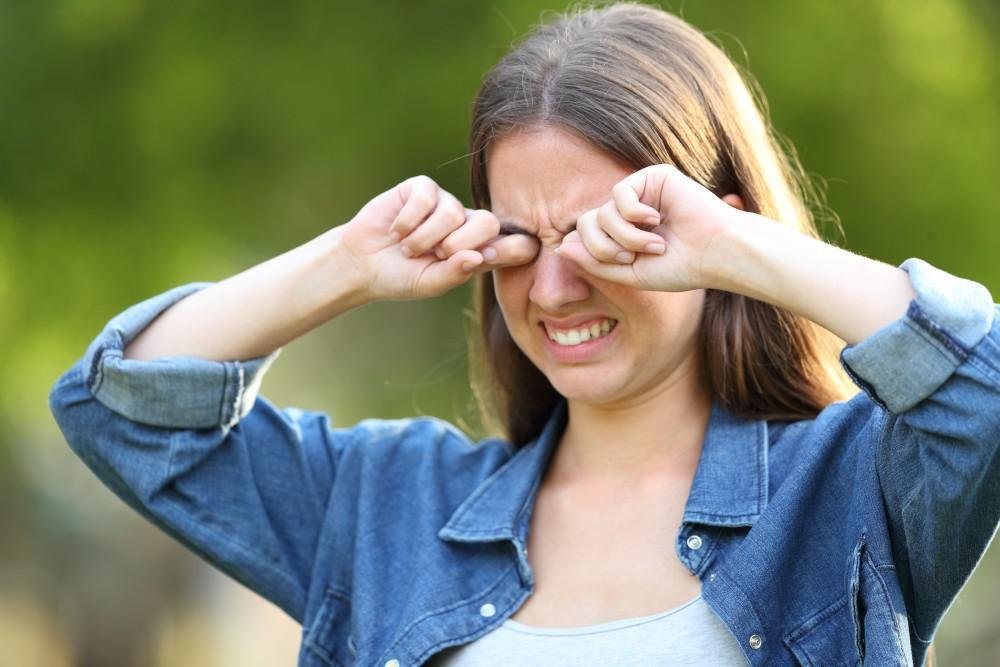Testing 1, 2, 3
Classic Vision Care offers an array of tests to keep your eyes in tip-top form. These include:
- Eye muscle test. Our doctors see how you follow a small light to judge eye muscle strength and coordination.
- Refraction assessment. We utilize a computerized refractor (phoropter) to view how well light passes through your lens and cornea to decipher if you require corrective lenses.
- Slit-lamp examination. We examine your cornea, iris, and the area in between while you rest your head upon this microscope.
We also measure your eyesight through a traditional visual acuity test, using charts with large and small letters. In addition, Dr. Patel and her team check for common vision issues, such as:
- Astigmatism, which causes your eye to be more oval than round, and can result in blurry or distorted vision.
- Presbyopia, which may occur as we age and our lens becomes less flexible, resulting in difficulty with seeing objects up close.
- Myopia, or nearsightedness, makes it more difficult to view objects at a distance.
- Hyperopia, farsightedness, occurs when your eyes don’t focus light as they should.
Fortunately, we can usually correct these issues easily with the proper lenses.
Glaucoma and retinal eye diseases
Your retina contains light-sensitive nerve cells that transmit visual data from your optic nerve to your brain. Glaucoma and diseases involving the retina can lead to extensive vision problems, even blindness. Dr. Matel and our staff determine significant changes in eye pressure, which may signify a problem.
One of everyone’s most memorable exams, known as noncontact tonometry, puffs air into each eye to estimate how much air is needed to flatten your cornea. After applying anesthetic eye drops, we may instead employ applanation tonometry, which stains your eyes with fluorescein dye to measure fluid pressure. If we judge the pressure to be higher than normal, we may follow up with a special pachymeter, which assesses corneal thickness via sound waves.
Dr. Matel also employs light waves to take pictures of your retina via a non-invasive optical coherence tomography (OCT). This maps layers of the retina for:
- Glaucoma
- Diabetic eye disease
- Age-related macular degeneration (AMD)
- Other retinal eye diseases
By measuring inflammation and fluid levels, we determine the best course of treatment.
Direct and indirect exams
Our team utilizes two methods to view the back of your eye.
Direct
We shine a light with an ophthalmoscope into your pupil to view the back of your eye.
Indirect
Dr. Matel, Dr. Machen, or Dr. Swalla wears a light mounted upon their forehead in order to see your retina and other areas within your eye in greater detail. We may also use eye drops to dilate your eyes for greater clarity.
Things to remember
We also use tests to determine your field of vision (perimetry), color vision, and more. Whether visiting our office for a routine exam or other diagnostic tests, bring along a list of symptoms and medications you currently use, plus any eye glasses or contact lenses.
It’s crucial to visit our office for your yearly eye exam or anytime you discover a particular vision-related problem. Simply call us or book an appointment online with Classic Vision Care today.
You Might Also Enjoy…
Is Squinting Bad for Your Eyes?
If you find yourself squinting throughout the day in order to see better, it may be a sign you need glasses. Is continuous squinting bad for your eyes? See how you can correct your vision without squinting.
Millions of people suffer from dry eyes in the United States alone. Discover five common symptoms and how to prevent and treat this uncomfortable condition to avoid further complications.
Are Glasses Better than Contacts?
Trying to decide between wearing eyeglasses or contact lenses? Consider all the factors, including comfort, ease, and appearance. We’ve compiled a list of pros and cons to help you see your way through this significant decision.
Why Sunglasses are Important All Year Long
No doubt you always have your favorite shades close by all summer. But sunglasses protect your eyes all year long, even during darker winter months. Learn how they shield your eyes from harmful ultraviolet (UV) rays any time of year.
How Astigmatism Affects Your Vision
Astigmatism causes a variety of symptoms ranging from blurred vision to eye discomfort and pressure. Understand how a comprehensive eye exam can pinpoint the cause of your symptoms and get your sight back on track.
Who Is at Risk for Glaucoma?
Could you be at risk for glaucoma? The short answer is that everyone, especially seniors, is at risk for glaucoma. Learn how to lessen your odds of losing your sight through early detection and treatment.







